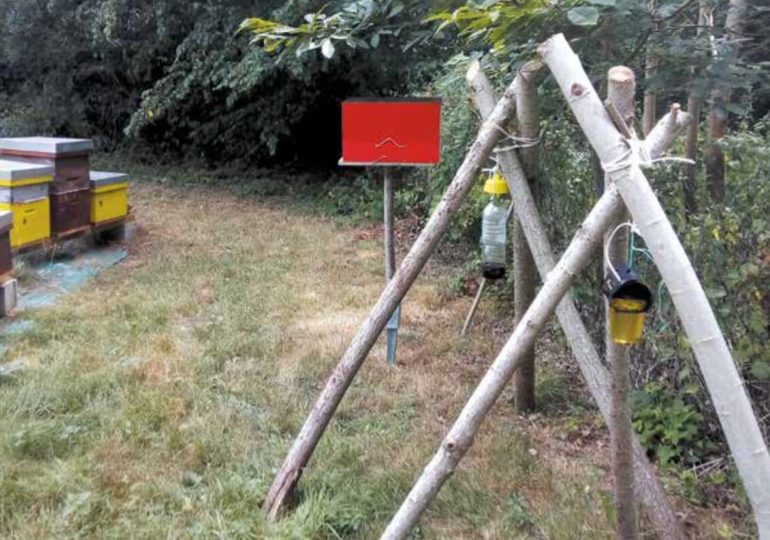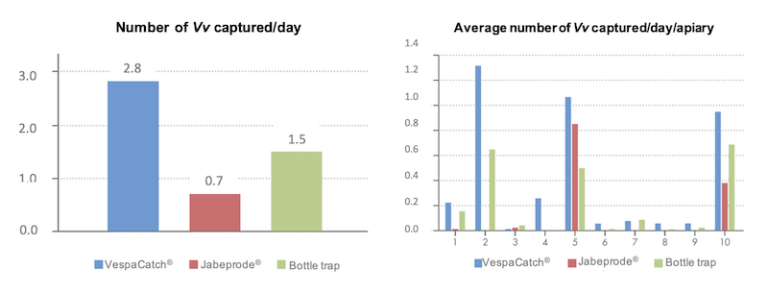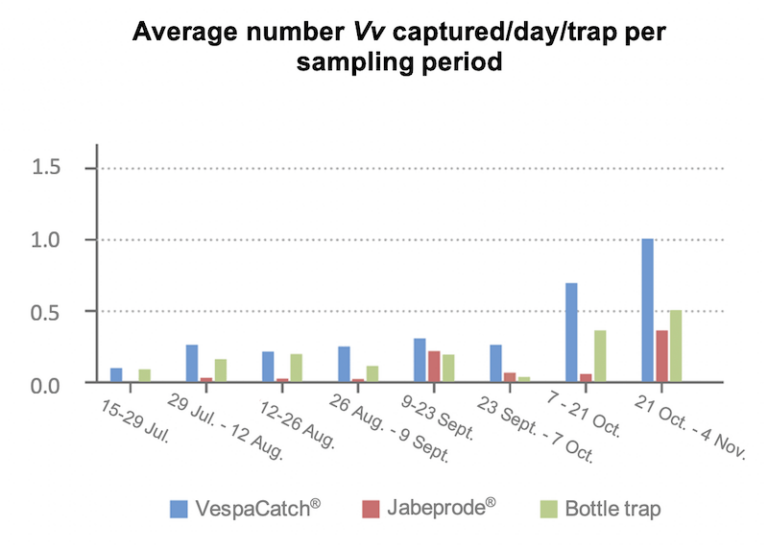 Véto-pharma
Véto-pharma A recently published study conducted in 10 apiaries in the Eure department (Upper Normandy region of northern France) in the summer/autumn of 2019 compared the effectiveness and selectiveness of three Asian hornet (Vespa velutina) trapping devices commonly used by beekeepers. The VespaCatch® trap came out as most effective in the test (four times more effective than Jabeprode® and almost twice as effective as the bottle trap), with the same level of selectiveness as the bottle trap. The Jabeprode® trap proved to be the most selective, but with limited effectiveness.
Summary of the original article “Analyse comparée de l’attractivité et de la sélectivité de trois dispositifs de piégeage de Vespa velutina nigrithorax” [Comparative analysis of the attractiveness and selectiveness of three Vespa velutina nigrithorax trapping devices] published in the journal La Santé de l’Abeille No 303 (May/June 2020).

Each beekeeper installed three types of trap behind their hives, less than 5 metres away:
The traps were in place from 15/07/2019 to 04/11/2019.
The contents of the traps were counted every 2 weeks, and the bait was replaced for the bottle and VespaCatch® traps.
It should be noted that in 2019, hornet pressure in the Eure department was classified as moderate to low (1,319 nests including 560 secondary nests).
During the period of analysis, the VespaCatch® trap captured an average of 2.8 Asian hornets in the apiaries, compared to only 0.7 for the Jabeprode® trap, and 1.5 for the bottle traps.
There was a higher number of captures for three apiaries, indicating the probable presence of an Asian hornet nest nearby.
The attractiveness of the traps also seems to depend on the sampling period, with captures increasing in autumn.



Overall, 73,832 insects (mainly the orders of Diptera, then Hymenoptera and Lepidoptera) were captured, all traps combined.

The authors advise using only the most selective traps, and only when Vespa velutina pressure is high and colonies are under massive attack. They hope a more selective bait will be developed (pheromone-based in particular) in the years to come, or they hope to see a reorganisation of the food chain enabling natural control of the Asian hornet.
However, beekeepers will almost certainly not be able to limit themselves to this recommendation in reality. Hornet pressure is so high in some apiaries that they will have to opt for more attractive solutions (highly effective traps) in order to trap as many Asian hornets as possible and avoid the decimation of the hives.
A compromise between the two approaches is probably the most realistic option:
Finally, here are a few tips that can help you optimise your trapping (recommendations from the VespaCatch® trap manual):
One thing is certain, selectiveness will be a growing topic of discussion in the debates on trapping Asian hornets. We can only hope to find a solution that could enable effective control of this invasive species while protecting the local entomofauna. We will continue working towards achieving greater selectiveness, without sacrificing effectiveness, in order to provide beekeepers with long-term relief.
Cover photo copyright: Philippe Picard